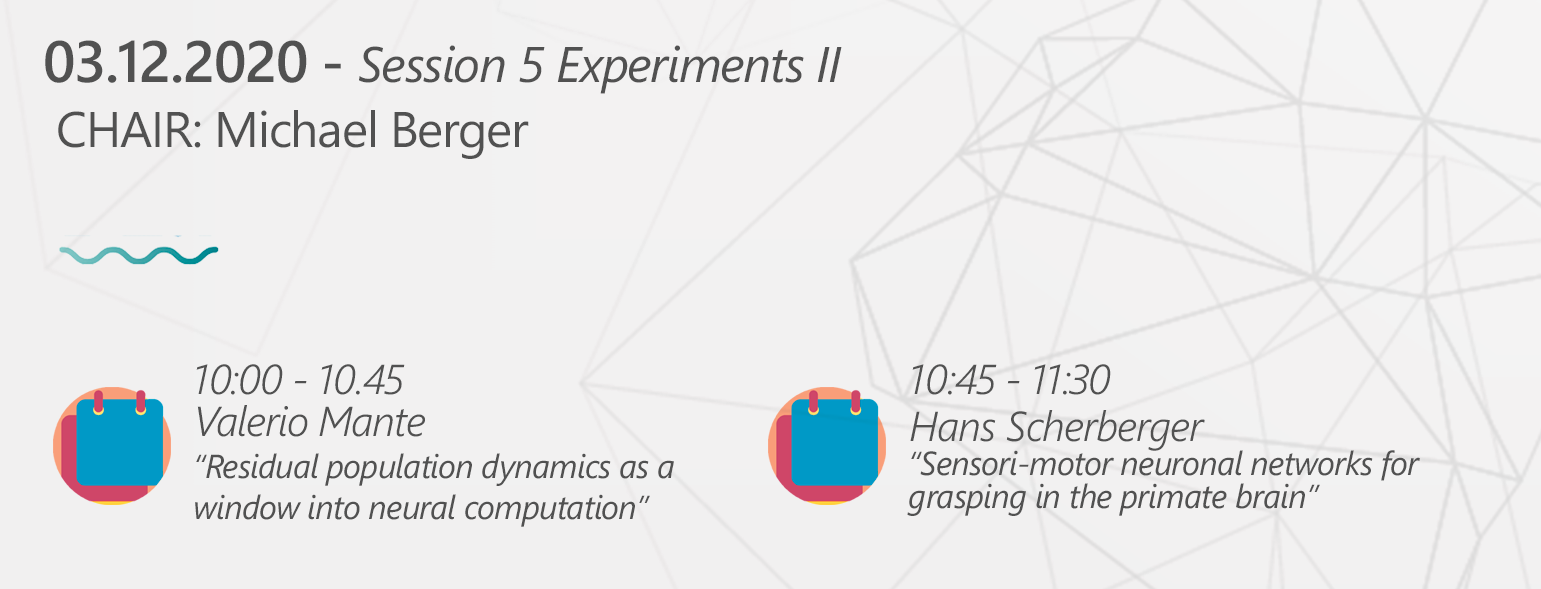
Session 5 - Details

Residual population dynamics as a window into neural computation
Valerio Mante
Neural activity in frontal and motor cortices can be considered to be the manifestation of a dynamical system implemented by large neural populations in recurrently connected networks. The computations emerging from such population-level dynamics reflect the interaction between external inputs into a network and its internal, recurrent dynamics. Isolating these two contributions in experimentally recorded neural activity, however, is challenging, limiting the resulting insights into neural computations. I will present an approach to addressing this challenge based on response residuals, i.e. variability in the population trajectory across repetitions of the same task condition. A complete characterization of residual dynamics is well-suited to systematically compare computations across brain areas and tasks, and leads to quantitative predictions about the consequences of small, arbitrary causal perturbations.
Sensori-motor neuronal networks for grasping in the primate brain
Hans Scherberger
Hand function plays an important role in all primate species, and its loss is associated with severe disability. Grasping movements are complex actions for which the primate brain integrates sensory and cognitive signals to generate meaningful behavior. To achieve this computation, specialized brain areas are functionally connected, in particular in the parietal (anterior intra parietal area, AIP), premotor (area F5), and primary motor cortex (M1 hand area). This presentation will highlight recent experimental results in non-human primates to characterize how individual neurons in these cortical areas interact in order to generate grasping movements on the basis of sensory signals, and how such neuronal population signals can be used to decode hand actions, e.g., for operating a neural prosthesis.
Computational Neuroscience Group



